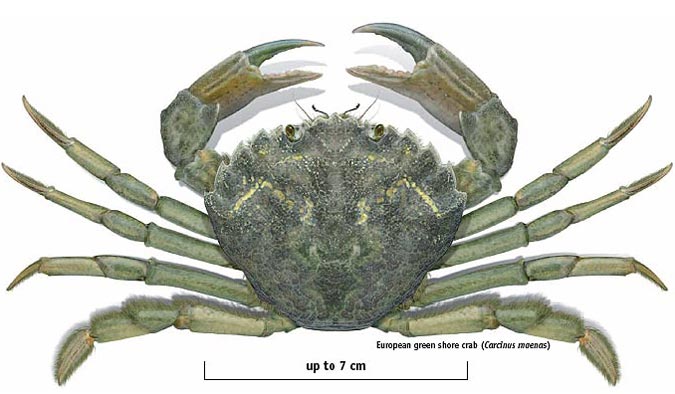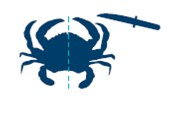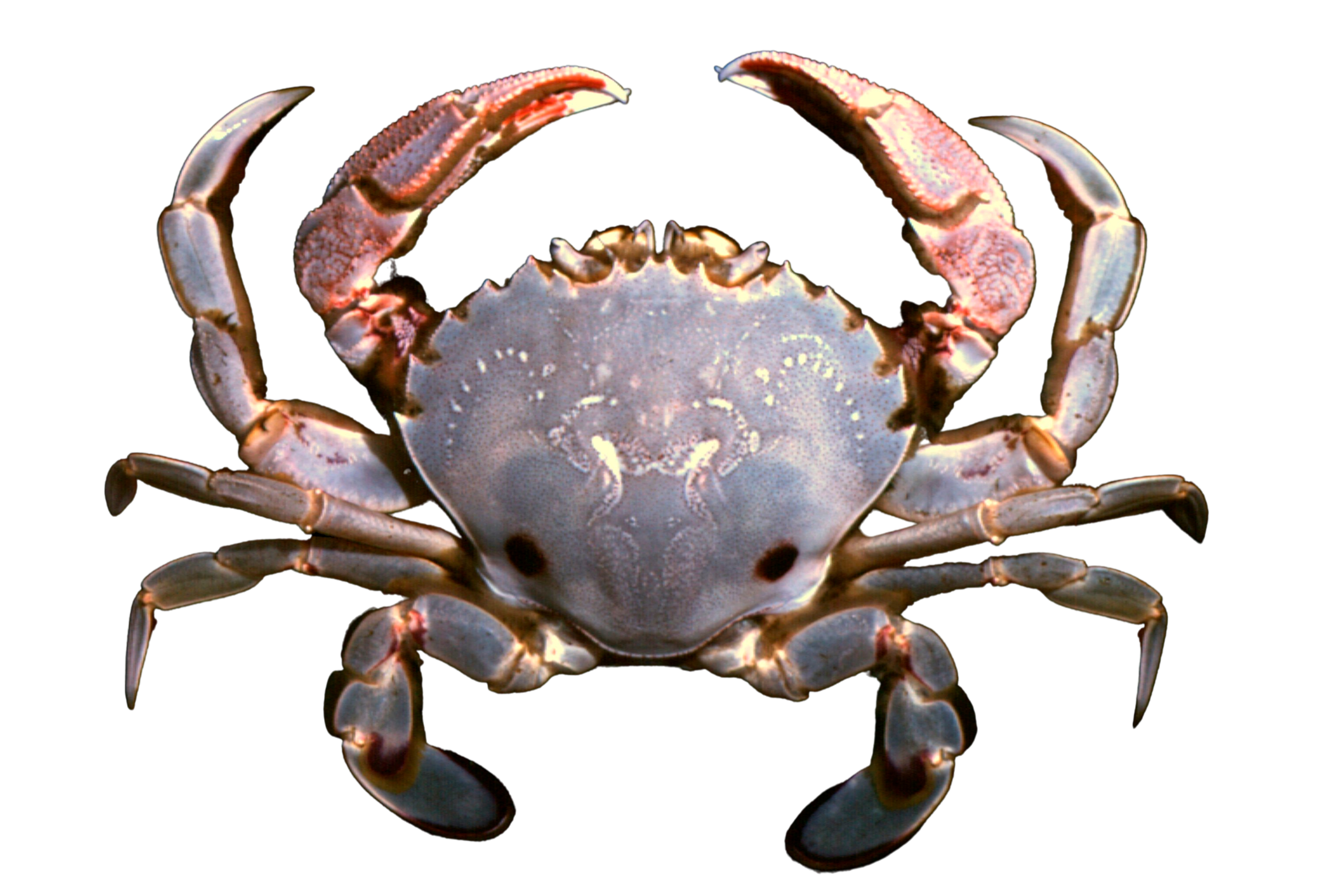European Shore Crab
Download the flyer: Reduce the spread of European green shore crab flyer ![]() [PDF File - 383.1 KB]
[PDF File - 383.1 KB]

To help prevent the spread of this invasive crab, Victoria has important regulations in place. If recreational anglers acquire this species for use as bait:
- it must not be used as live bait
- it must not be released to the water alive
Identification
Key features:
- 5 spines on each side of eyes
- Last pair of legs sharp & slightly flattened - no swimming paddle
- Smooth green/brown shell with pale orange underside
- Shell up to 7 cm wide
Distribution, habitat & impacts
Found in Gippsland, Port Phillip Bay and west to Apollo Bay:
- Intertidal mud flats and rock platforms
- Seagrass meadows
The European green shore crab is an invasive species which out competes and eats native species.
Legal take
Limit: no limit.
Must not be collected from the intertidal zone in Port Philip Bay (i.e from the maximum high water mark on land to waters 2 metres deep)
Humane dispatch
Unless released immediately upon capture, live European green shore crabs must not be released into or next to any Victorian waters.
Dead green shore crabs can be used as bait. To use as bait the crab must first be dispatched humanely:
- place in an ice and seawater slurry for at least 20 mins, then
- cut it half vertically between the eye stalks.
Know your native crabs and limits
Some species of native crab could be confused with European green shore crab. The key features of these native crabs are shown below.
Bag limit: 30 crabs or 1 litre of whole or parts of crabs (for all crabs except European green shore and giant spider crabs*)
No species of crab can be taken from the intertidal zone of Port Phillip Bay (i.e from the maximum high water mark on land to waters 2 meters deep).
*Giant spider crabs (Leptomithrax gaimardii), which look quite different, are subject to different recreational bag limits. Please refer to the latest VFA Recreational Fishing Guide for details.

Sand crab (Ovalipes australiensis)
- Pale grey shell
- Swimming paddles on last set of legs
- Purple spot towards rear
- Shell up to 11cm wide

Red rock crab (Guinusia chabrus)
Also known as Red bait crab or Red rock crab
- Distinctive dark red/brown
- Four notches across the front (two of which contain the eyes) and sharp spines on the side
- Pale lines on walking legs
- Shell up to 7 cm wide

Paragrapsus species
Four toothed shore crab (Paragrapsus quadridentatus) pictured
Features:
- One notch on side behind the eye
- Yellow/green/brown shell with black spots
- Shell up to 3cm wide
